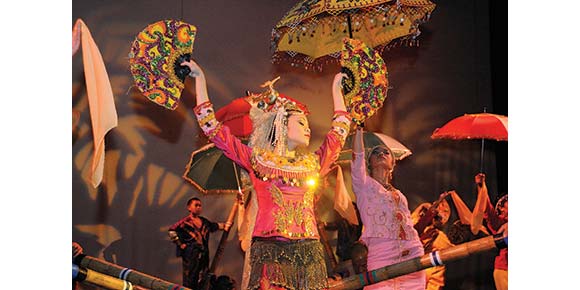The 46th annual Folklorama festival, when Winnipeg hosts the world, begins on August 2 and runs until August 15.
This year, 43 pavilions will be featured at various venues across the city. Twenty-one pavilions are featured in the first week, with twenty-two pavilions opening for the second week.
“Folklorama is a Winnipeg tradition,” said Debra Zoerb, the executive director of the festival.
“Everyone has their own special Folklorama memories and their own game plan for taking in as many pavilions as possible. That’s why we are encouraging festival-goers to ‘See it All’ this year,” she added.
New to the festival this year is the Cuban Pavilion in week one, while returning after an absence are the Hungarian Pavilion in week one and the Indo-Caribbean Paradise and Indochina Chinese pavilions in week two.
Five pavilions have participated in Folklorama since it was founded as a week-long festival in 1970: the German, Greek, Nayong Pilipino, Scandinavian and Ukraine-Kyiv pavilions.
In its first year, Folklorama attracted 75,000 visitors to the 21 pavilions, while an average of 400,000 festival-goers have attended in recent years.
Folklorama actually started out as a one-time festival to celebrate Manitoba’s centennial in 1970, but its success that year led to it becoming an annual event, and it has since grown to be the largest and longest-running multicultural festival of its kind in the world.
In 1989, Folklorama became a two-week festival divided into week one and week two pavilions.
Folklorama venues are spread throughout Winnipeg in school auditoriums, arenas, curling rinks and cultural centres.
Locations tend to be clustered together to allow visitors to attend more than one pavilion each evening.
“Year after year, our success is due to our amazing network of volunteers,” said Zaleena Salaam, the president of Folklorama. An astonishing 20,000 people volunteer with Folklorama every year. We couldn’t do it without them.”
Volunteers serve in a number of capacities, including as bartenders, cooks, musicians, singers and dancers who are representatives of the ethno-cultural traditions of each of the 43 pavilions.
The 20,000 volunteers dedicate thousands of hours of their time between January and August to ensure the success of Manitoba’s celebration of ethnic diversity.
Zoerb said there are several ways to “See it All” at this year’s festival.
Children 12 and under are admitted free to pavilions and a single admission is $6 at each pavilion’s door.
Other options are the Vickar Automotive Group Fun Pack, with 12 tickets for the price of nine, or the Folklorama Mini Fun Pack, with five tickets for $25.
There are also a variety of all-inclusive VIP tour options, including late-night tours, party tours, cycle tours, walking tours and accessibility tours.
The VIP tours are $69.95 for three pavilions, $54.92 for two pavilions and $34.95 for cycling and walking tours. The cost of a VIP accessibility tour is $54.95 and two pavilions are visited.
As well, organize a minimum group of 15 people and contact Folklorama to customize a tour based on your interests.
“Let us know what you like (wine, beer tasting, a foodie feast, a specific cultural region) and we’ll make it happen,” said Zoerb.
The vision of Folklorama is to promote “the ethno-cultural diversity of Manitoba through entertainment and public celebrations of culture and education.
“Folklorama provides the opportunity for ethno-cultural communities to promote and celebrate their intangible culture.”
The basic foundation of Folklorama is respect for people, appreciation of diversity, integrity and respect for culture.
The Folklorama Llama, the festival’s mascot, was introduced in 1986, to bring humour and charm to people of all ages. The mascot visits every pavilion.
Each pavilion has standard show times at 6:45, 8:15 and 9:45 p.m. But some pavilions offer additional shows, which are listed in the Folklorama Travel Guide. Businesses across Winnipeg have copies of the guide, while the guide and more information is also available at Folklorama.ca



